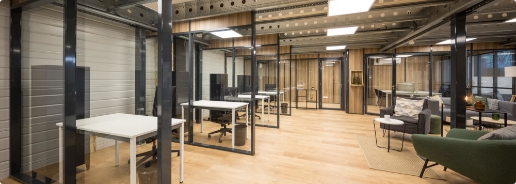
How to choose your wardrobe
A checkroom is a storage cupboard for personnel's personal belongings and outerwear (coats, jackets, shoes, etc.) during working hours. There are several types of checkroom to suit different needs.
Checkrooms come in a variety of colors, sizes and accessories.
Which locker room for which activity?
A locker room for a government agency will not be the same as one for an industry, a business, a facility open to the public, a workshop or one used in wet environments.
There are 2 main categories of checkroom, depending on your type of activity:
Clean Industry
Checkrooms for clean industry consist ofa single vertical compartment with a clothes-hanger rod and top shelves. They are suitable for all types of industry, and enable staff to store their belongings during working hours.
If you're in the service sector, working in offices, for a pharmacy or a local authority, you're more likely to opt for clean changing rooms, multi-compartment changing rooms or locker rooms.
Dirty industry
According to regulations (article R 232-2 of the French Labor Code), when work clothes are likely to be soiled with dangerous, dirty or malodorous materials, lockers must include a compartment dedicated to these garments.
Checkrooms for dirty industry therefore feature a partition creating 2 compartments to separate street clothes from work clothes and prevent mixing of belongings. As for clean industry, this industrial locker also features a top shelf for a construction or motorcycle helmet. These lockers are mainly used in the food industry, construction, factories and workshops.
More specific lockers are also available, such as those for firefighters.
What type of locker room?
Monobloc or demountable? Flexible or low-cost? Heated locker room?
Find out all there is to know about demountable, monobloc and heated changing rooms to help you make your choice!

The removable changing room
This type of checkroom, supplied in kit form, must be assembled with the help of instructions or by a professional. It's economical, and can be delivered and installed anywhere, even in cramped, hard-to-reach spaces. Once assembled, it's as stable and rigid as a one-piece locker!
It consists of a minimum of two elements: a starter element and a follower element. Before starting any installation, it's important to understand how it's set up.
A starter unit consists of two walls and can therefore be used on its own. It is essential for creating a row of changing rooms.
Thenext element has only one wall and cannot be used on its own. It must be combined with a starter element.
Your row of changing rooms can be extended at will, simply by adding further elements.
The advantage of this system is that it takes up less space in width, since the following elements have only one wall. The changing rooms therefore have common walls.

The one-piece locker
The monobloc locker is a locker made froma single, factory-welded component.
This type of locker saves installation time, asit is delivered assembled.
Solid and rigid, the monobloc locker is available with one or more columns and lockers.
Unlike demountable lockers, monobloc lockers are not dependent on other elements, and can be used on their own.

Heated or drying changing rooms
For fast, efficient drying of work clothes and impeccable hygiene, ventilated or heated changing rooms are equipped with ventilated racks or a quick-drying motor.
Collective heated closets are also available.
This type of changing room may be necessary in sectors such as construction, where employees are exposed to the elements outdoors.

The screened-in locker room
A wire-mesh locker room can be indispensable when it comes to draining wet clothes, such as diving suits.
Our one-piece mesh lockers are built to last, with a hot-dip galvanized finish that resists humidity and salt.



